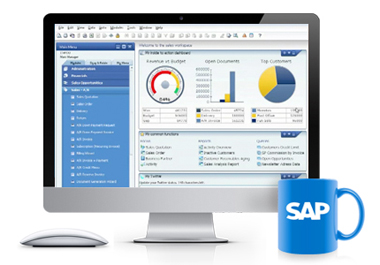Is Your Company Web Site Easy To Use?
There’s no question that an attractive web site design makes a great first impression for your visitors. But user satisfaction is even more heavily determined by what happens after they’re wowed by your initial design. Making sure your website is pleasant and easy to browse translates to longer visits which is a key factor in turning your website visitors into customers. Here are 8 tips to keep in mind when it comes to web site usability:
1.) Keep Web Site Navigation Consistent
Consistent navigation is arguably the most important factor in decreasing user frustration. Just because the content of your web pages change does not mean that your navigation should. If you have a horizontal menu on the top of your web site, keep it there and keep the links consistent. Sub-menus that may display on the side of your pages should be kept in the same position and. One of our favorite menu options is the “sticky” menu which keeps the menu in place as the user scrolls up and down the page, making the menu visible and accessible within the web site no matter where a user is looking on a page.
2.) Include A Search Feature In Your Web Site
Think about how many times you’ve found exactly what you wanted when visiting a site by using the search feature. Pretty handy, right? Your users think so too. Don’t risk leaving your users feeling left out in the cold by forgoing this feature. Make sure you keep the search form in a consistent, highly visible location. To prevent the user from having to scroll to see the web site search feature, we recommend keeping it somewhere near the top of the page.
3.) Don’t Require Too Much Of Your Users
If a user has decided to fill out a form on your web site to send you some information about themselves, the last thing you want to do is make them answer too much. Too many required questions take too much time and can make the user feel uncomfortable. If it’s the case that you absolutely require a user to type their phone number, for instance, make sure you tell them why and how it will be used. Transparency is best when it comes to information gathering.
4.) Keep Error Messages Helpful & Friendly
Speaking of those forms ““ don’t forget to pay some attention to your error messages. An unfriendly (think bright red exclamation marks) or an un-helpful error message is a turn-off for your users. If your user receives an error message because they forgot to add the .com to the end of their email address, show them and example of what you need the formatting to look like, don’t just tell them it’s wrong. You can’t avoid error messages all-together, but you can make sure that they are friendly, and helpful in getting your web site user back on track as fast as possible.
5.) Embrace The Web Site Bread Crumb
Bread crumbs are the trail of links or page names that shows the user what page they’re on. They look a little something like: Home > Our Services > Website Design
Use them! Using breadcrumbs within your web site to remind your users where they are is a polite way to make sure the user doesn’t feel lost or get turned around (because that doesn’t help them or you). If you make the page names link to the actual pages, it’s also a really handy way to navigate backward.
6.) Include Redundancy in Your Web Site Navigation
Not all your visitors will relate to the same type of navigation. For instance, there are some people who would rather have the simple text navigation as opposed to those who prefer to see an image of what they’re looking for and click-through to the page that way. If you offer both a graphical navigation (when applicable) and a text-only navigation within your web site your users will be able to pick their preference.
7.) Make Your Contact Info Readily Available
There are few things more frustrating than having to “hunt” for a business phone number or email address. This may mean making sure your phone number is in the header of all your web site pages, or making sure the contact page is named something very obvious like “Contact Us”. Also, if your contact page includes a contact form, remember that your email address won’t be available unless you also include the actual email address on the page. Some people don’t want to use your form (for reasons like wanting to have a copy of the sent email) and would rather send you an email from their mail client. So make sure it’s there for them!
8.) Make Your Web site Content Easily Readable
There are plenty of factors that determine whether your web site content will be an easy read or an eye strain. Color ““ white background with black text is the easiest to read. You can play with this but make sure to avoid any color combinations that “vibrate” against each other like red on blue or blue on red. Formatting ““ break the text apart so the user’s eyes can absorb each section better by using short paragraphs, bold headers, and lists. Another trick for making text more palatable is to display it in newspaper layout so you have more than one column making each line shorter and easier to read.
For Business to Business (B to B) and/or Business to Consumer (B to C) Web Site Design, Contact Cornerstone Consulting
Need some help with reducing user frustration on your web site? Our experienced web site designers are here to help!
Give us a call at 813-321-1300 or email us here.
Author: Julianna Stoll


